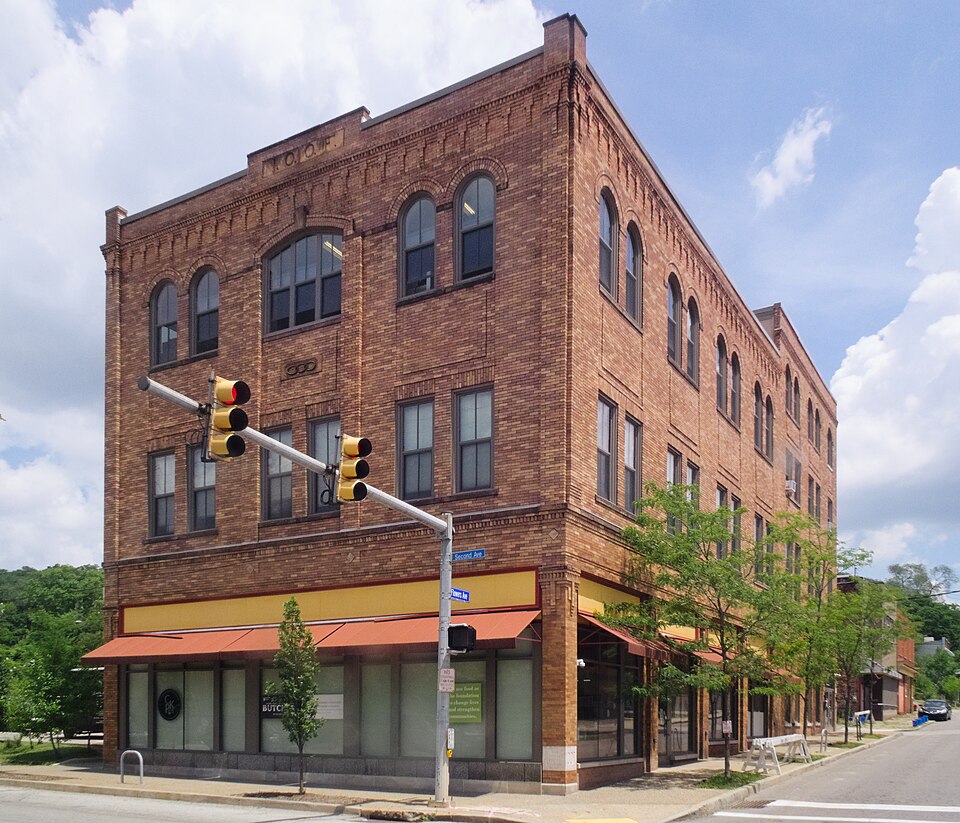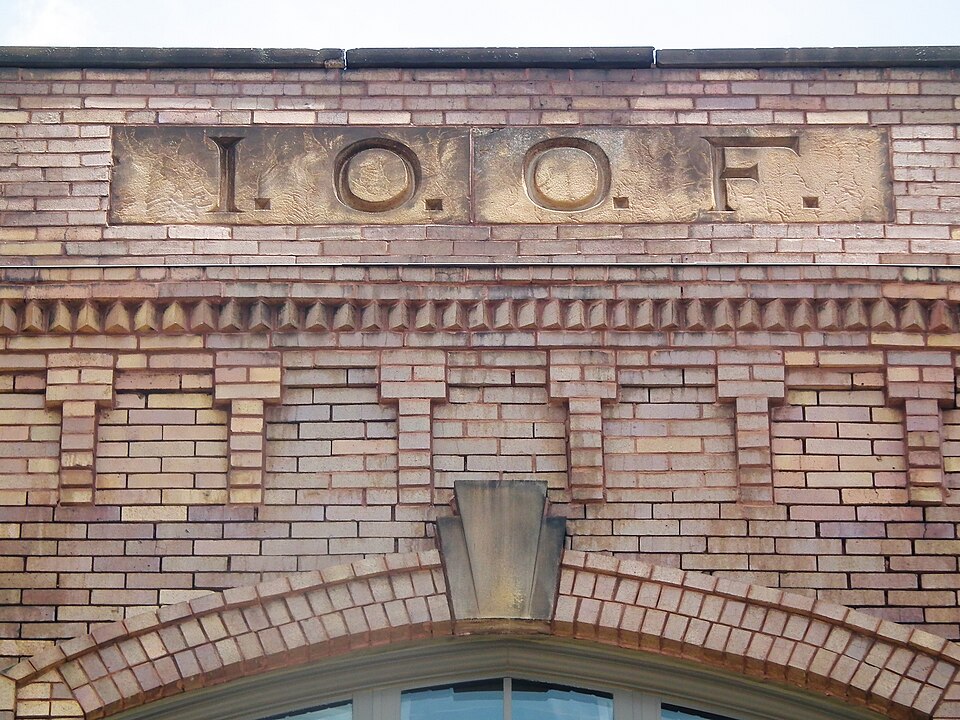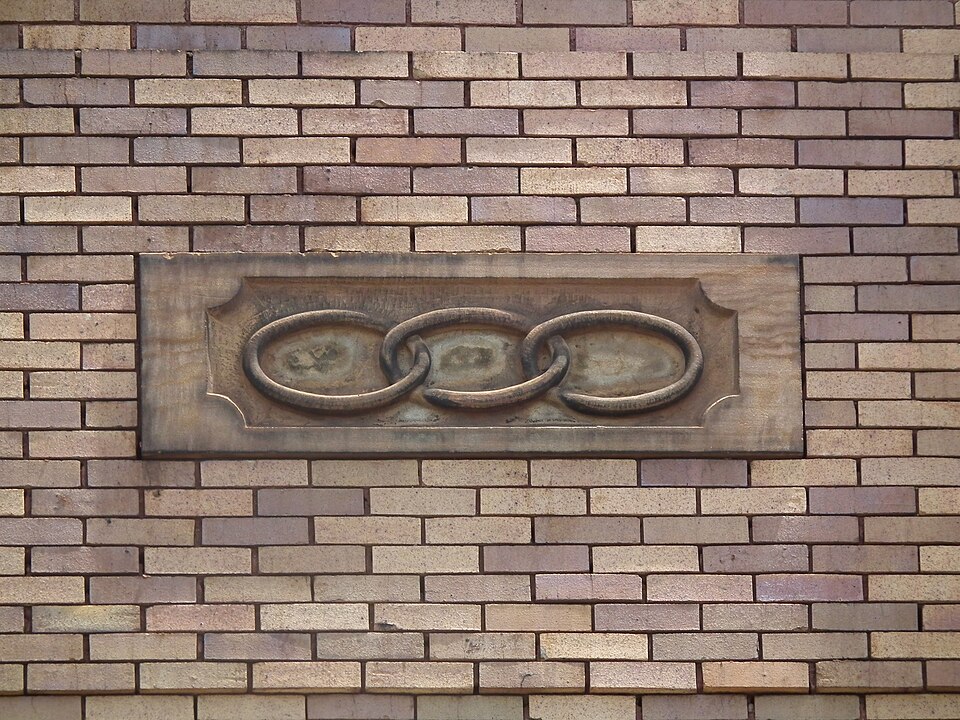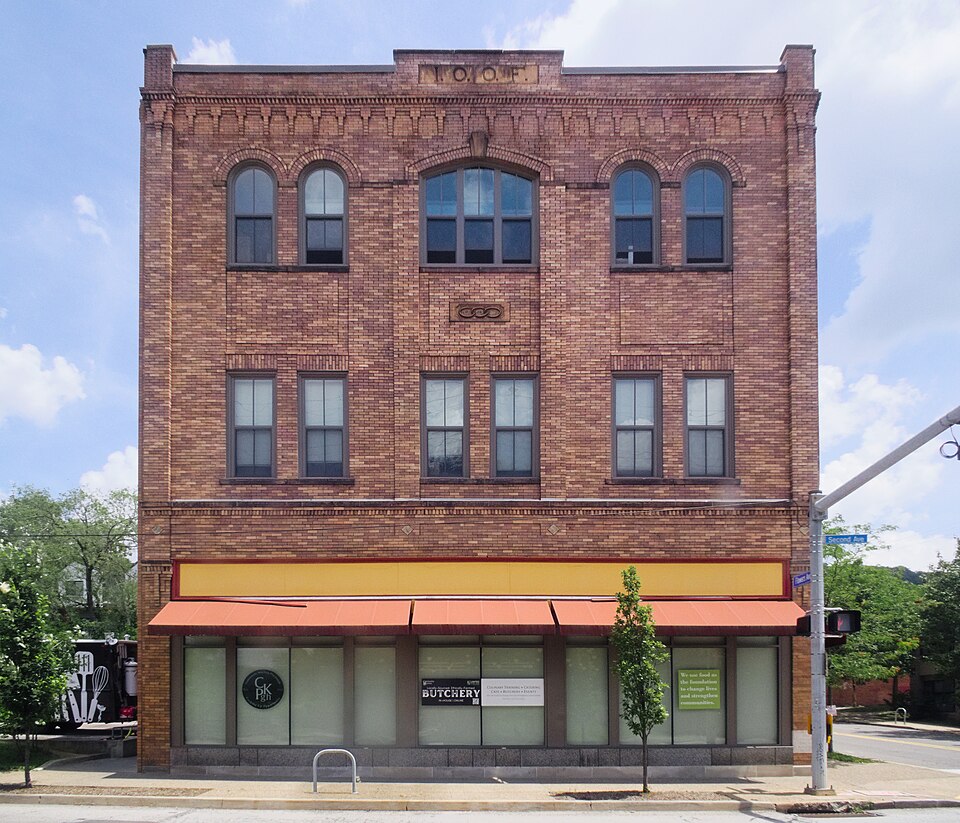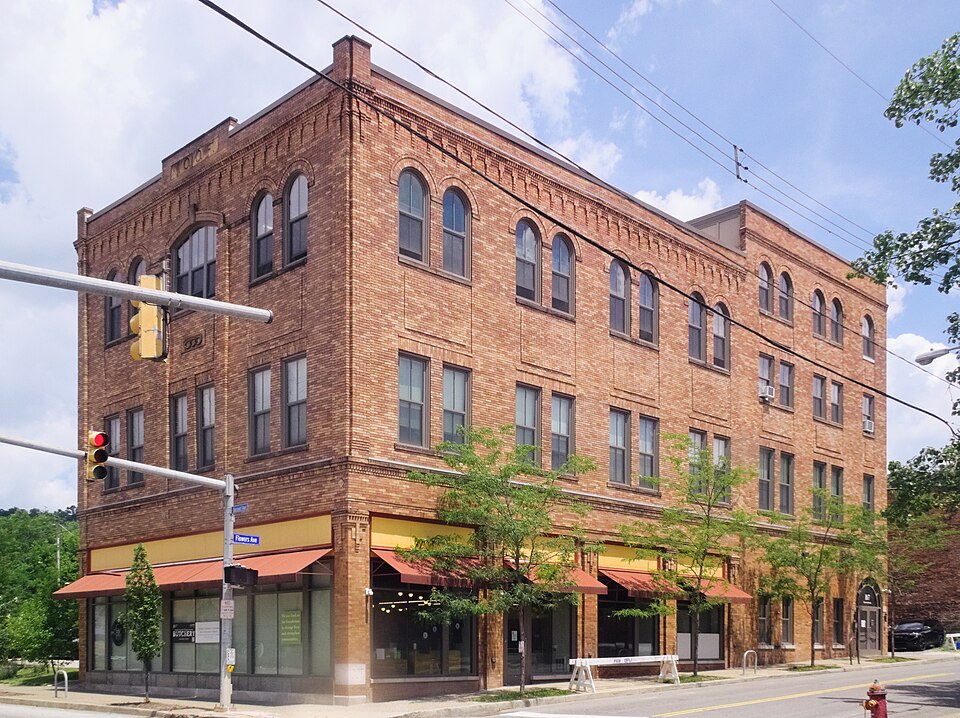
St. Ann’s was built in our most Hungarian neighborhood for Hungarian Catholics. The cornerstone was laid in 1919; the congregation worshiped in the basement of the unfinished building for a few years, and finished the church in 1925. The church closed in 1998, and the building was sold; its current owners have kept it from falling down.1 That is as much as old Pa Pitt knows about the church, other than what you see in these pictures.

From the front, the church seems extremely tall, with its sanctuary upstairs from the main entrance. However, Hazelwood is a neighborhood mostly built on a slope, and the altar end of the sanctuary is at ground level. The cross in a circle on the façade was originally a rose window.





The central tower has an octagonal belfry.

Two identical side towers have interestingly treated roofs.
Comments










